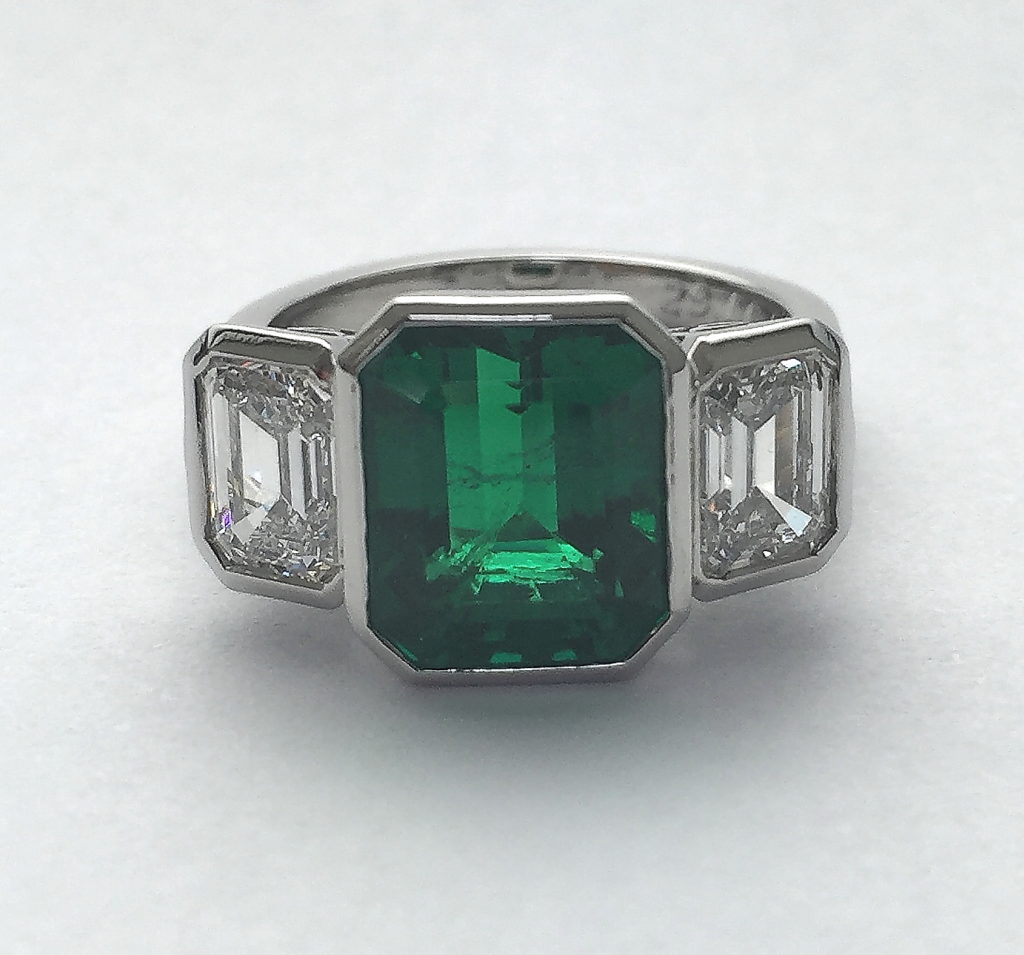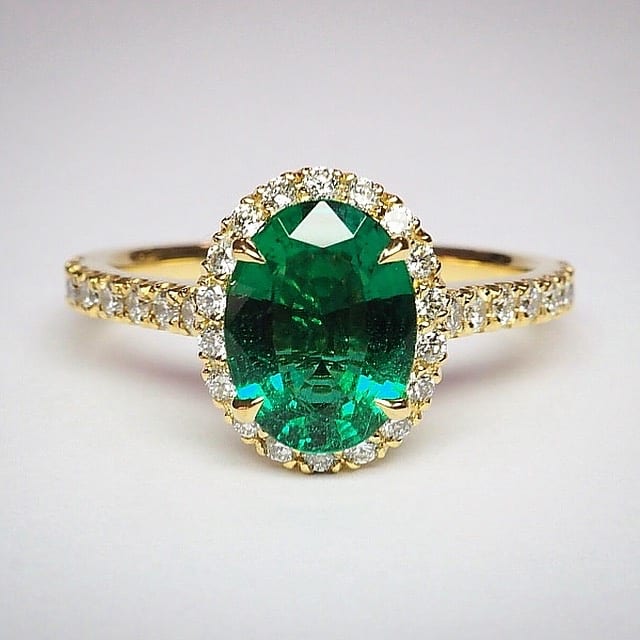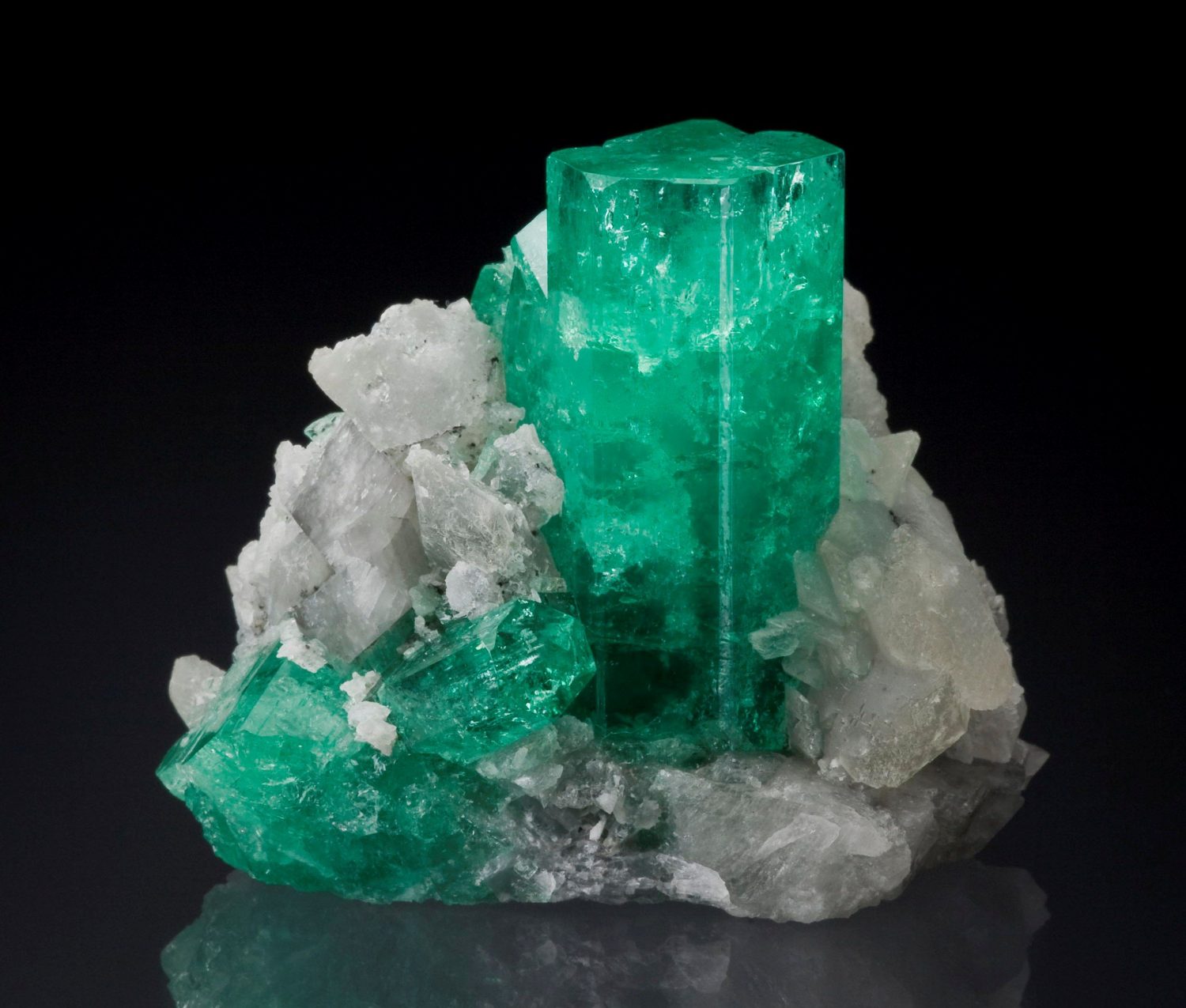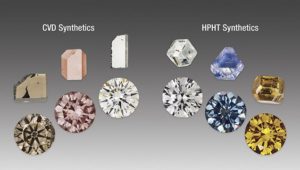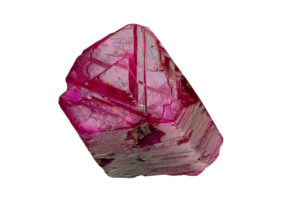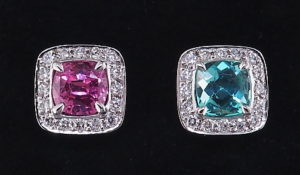Emerald – Rough to Polished Gem
Emerald, one of the big four gemstones is a variety of Beryl which also includes the varieties of Aquamarine, Morganite and Heliodor. Emerald belongs to the hexagonal system, one of seven crystal systems and is identifiable in the Rough with a hexagonal shape which are popular with collectors.
The first known emeralds were mined in Egypt 1500BC and then India in the late 14th century. During the 16th century, the Spanish discovered mines in Colombia and traded emeralds across Europe and Asia in exchange for precious metals.
The synthesis of emerald took place in the early/mid 19th century and today most emeralds are enhanced with oil which are acceptable. However, other treatments such as the polymer resins that hide fractures, are now more stable but they need to be disclosed as the treatment will enhance the emerald. Any significant sized emerald should be sent to a laboratory for grading and tested for treatments.
The colour of emerald is due to trace amounts of chromium and vanadium. Inclusions vary considerably in emeralds from lightly included to heavily included but are appreciated and add to the stone’s charm and natural beauty. Types of inclusions are two/three phase inclusions (see below) which are either a mineral, liquid or a gas, fractures, growth tubes, veils and negative crystals.
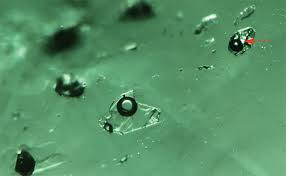
Image credit GIA.edu
The durability of emerald is very important as the gemstone is only 7.5 to 8 on the Moh hardness scale meaning that the stone can scratch easily and be susceptible to abrading. However, emerald has fair to good toughness, making it a stone that requires care in wearing than ruby or sapphire which are harder on the Moh scale
The stability of emeralds must be considered as any heat can damage emeralds and extend existing fractures. Oils, resins and polymers are used to fill surface reaching fractures but can be raked out with ultrasonic cleaning equipment. I have seen emeralds with a strong greenish blue hue that have been treated with polymers which have had the filler raked out with ultrasonic cleaning equipment resulting in a lime green yellow colour, so be aware of any enhancement to emeralds.
The main emerald sources today include Colombia who supply 50% of the emerald trade, Brazil, Zambia and Zimbabwe. In terms of value Colombian emeralds trade at a higher price per carat than Brazilian and Zambian emeralds.
For purpose of valuations, colour is the most important variable governing value. There are different sources of colour in emerald and the most desirable colour is Vivid Green from Colombia and Bluish Green from Zambia. A valuer will assess a gemstone for colour(s) and then assess the number of inclusions and will do same for cut with reference to light performance, proportions and finish, resulting in a quality grade.
Have a look at the two gem quality dress rings created below for two of my clients. If you take a careful look at the primary colour which is green, the colour is modified with a bluish hue and is typical of Zambian emerald. For any enquiries for Emerald commissions, please contact me.
